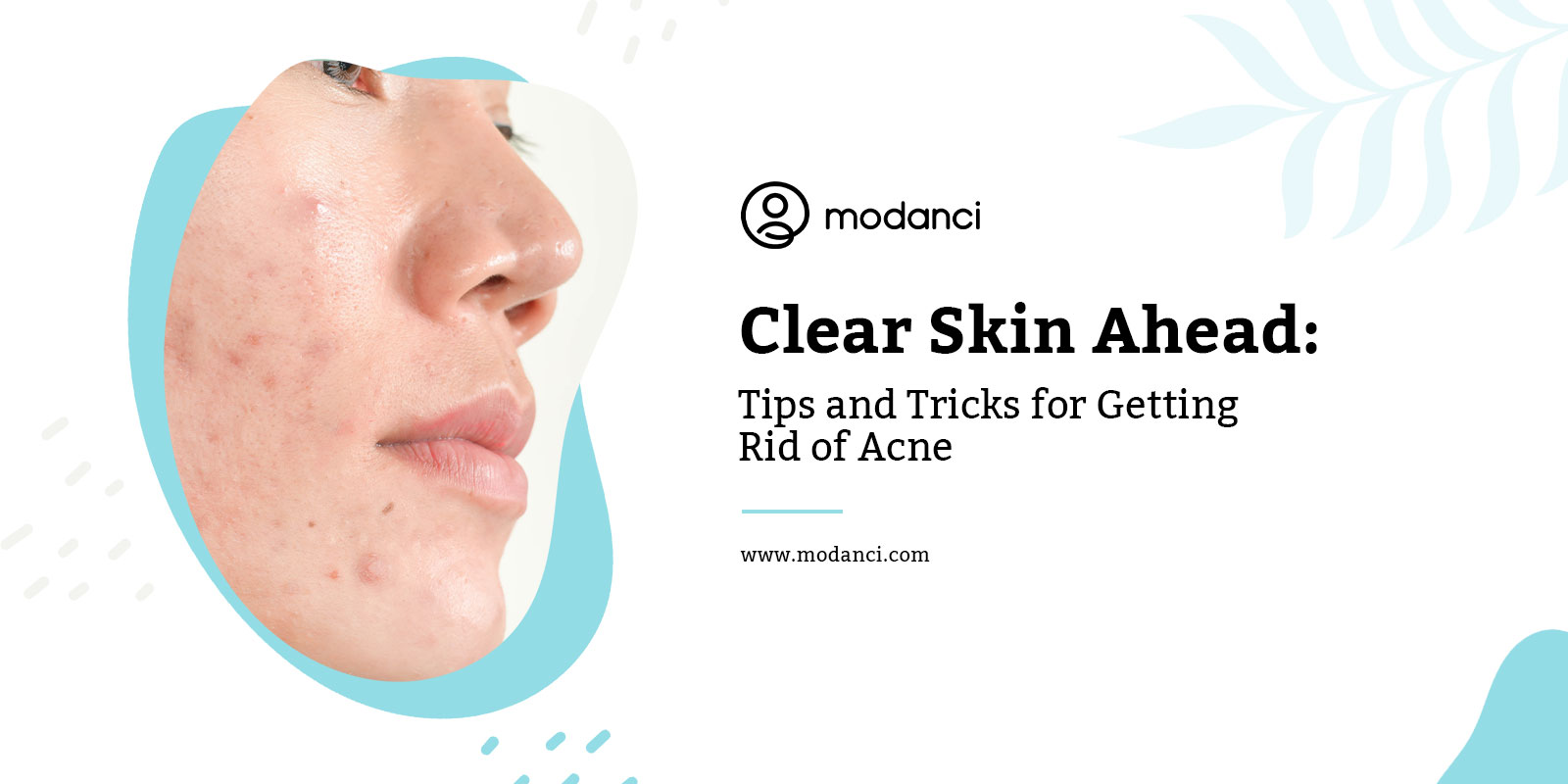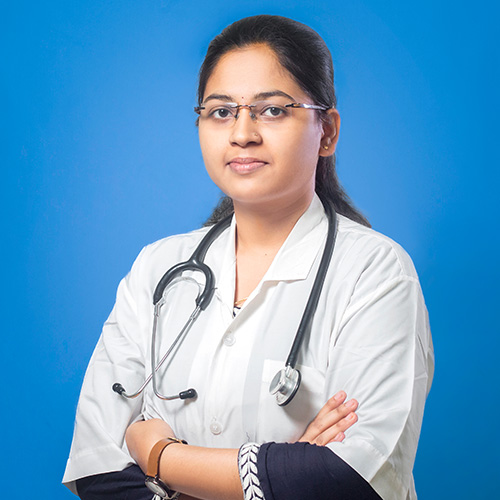Have you observed that you often experience red and sensitive bumps on your face even with your most diligent skincare routine? These blemishes, commonly referred to as acne, are commonly seen in teenagers but can also affect people of other age groups.
Acne can be painful and, in severe cases, may lead to scarring. However, recognising the specific type and underlying cause of acne can assist in preventing its recurrence. Furthermore, Ayurvedic remedies offer a holistic approach to treating this condition and enhancing overall skin health.
Scroll down to learn about the various types of acne, their causes, and methods for treating the condition.
Types of Acne
Ayurveda categorises acne as one of the minor skin conditions known as ‘Kshudra Twak Rogas.’ It is referred to as ‘Yuvana Pidaka’ in Ayurvedic texts, and they provide comprehensive guidelines on adopting a balanced diet and skincare regimen based on Ayurvedic principles to address acne.
But there are a few major types of acne. Recognising the specific acne you’re dealing with is crucial for effective treatment. Acne can be categorised as either noninflammatory or inflammatory.
Noninflammatory Acne
Noninflammatory acne, such as blackheads and whiteheads, typically doesn’t result in inflammation or swelling. This kind of acne is usually easy to treat.
- Blackheads (open comedones)
Blackheads form when a combination of sebum and dead skin cells clogs a pore. Although the rest of the pore is blocked, the top remains open, resulting in the distinctive black colour visible on the surface.
- Whiteheads (closed comedones)
Whiteheads can also develop when a pore becomes congested with sebum and dead skin cells. However, unlike blackheads, the top of the pore closes, causing a small raised bump on the skin.
Inflammatory Acne
Inflammatory acne is characterised by red and swollen pimples. While sebum and dead skin cells contribute to this type of acne, the presence of bacteria can also lead to the blockage of pores. Bacteria can cause an infection deep within the skin, resulting in the formation of painful acne lesions that are difficult to get rid of.
- Cysts
Cysts can develop when pores become clogged with a combination of bacteria, sebum, and dead skin cells. These blockages occur deep within the skin and are situated further below the surface compared to nodules.
Cysts are large, painful bumps that can be either red or white. They are often sensitive to touch. Cysts represent the most significant form of acne, and their formation is typically associated with a severe infection. This type of acne is also highly prone to causing scarring.
The prescription medication isotretinoin (Sotret) is frequently prescribed to treat cysts. In severe cases, dermatologists may opt to surgically remove a cyst.
- Nodules
Nodules arise when clogged and swollen pores experience additional irritation, causing them to enlarge. Unlike pustules and papules, nodules are located deeper beneath the skin.
Due to their deep placement, nodules cannot be easily treated at home. Prescription medication is necessary for their resolution. Typically, Ayurvedic Vaidyas or dermatologists prescribe oral medication for this type of acne.
- Papules
Papules form when there is intense inflammation, causing the walls surrounding the pores to break down. This leads to hardened, blocked pores that are sensitive to touch. The affected skin around these pores usually appears pink.
- Pustules
Pustules can develop when the walls around the pores also break down. Unlike papules, pustules contain pus. These raised bumps emerge from the skin and are typically red in colour. They often have yellow or white heads on the surface.
As we are familiar with the major types of acne, let us understand the causes.
What causes Acne?
What does Dermatology say about Acne:
Acne is caused by an imbalance in the pilosebaceous unit, which is responsible for regulating sebum production and the natural shedding of dead skin cells. Hormonal changes often contribute to this imbalance, leading to increased sebum secretion and the accumulation of keratinocytes, which in turn block hair follicles and result in comedonal acne.
When non-inflammatory comedonal acne becomes infected by the Propionibacterium acnes bacteria, it can progress to inflamed acne, such as pustules and nodules. The presence of pus in the hair follicle is due to an immune response that attracts white blood cells to the site of infection.
Several factors can trigger this acne-related disorder of the pilosebaceous unit:
- 1. Hormonal changes during puberty or early pregnancy, with increased levels of androgen hormones.
- 2. Fluctuations in estrogen and progesterone levels, often experienced before or during the menstrual cycle.
- 3. Genetic skin disorders.
- 4. Higher prevalence in women diagnosed with polycystic ovarian syndrome.
- 5. Use of comedogenic skincare products.
- 6. Consumption of oily, spicy, or high-sugar foods.
- 7. Stress, which can disrupt metabolism and lead to toxin accumulation in the body.
- 8. Overexposure to heat, friction, and sun.
- 9. Skin diseases causing dryness or impairment of the skin barrier.
- 10. Poor hygiene and lack of a proper skincare routine.
- 11. Certain medications, such as lithium, androgenic steroids, and corticosteroids, can also trigger acne.
What does Ayurveda say about Acne
According to Ayurveda, the balance of Doshas (life energies) in your body can be affected by various internal and external factors, leading to skin problems such as acne. The occurrence of acne, known as “Yuvana Pidakas” in Ayurveda, is attributed to an imbalance of the Vata, Pitta, and Kapha Doshas, which in turn affects the blood (Rakta dhatu) and muscles (mamsa dhatu). Severe acne cases may involve the formation of pus . An imbalance of Vata and Pitta results in increased keratinocytes, while excess Kapha leads to excessive sebum secretion. This leads to the blockage of skin pores and the subsequent formation of acne.
Knowing Your Skin-type
Understanding your skin type is essential for selecting suitable skincare products and avoiding potential issues. You can use the following guidelines to identify your skin type, but seeking assistance from a dermatologist or Ayurvedic physician can also be helpful if you’re uncertain:
Dry
Dry skin often feels tight and appears flaky.
Oily
Oily skin tends to have a shiny appearance by the end of the day.
Combination
Combination skin has both dry and oily areas, with the T-zone (forehead, nose, and chin) usually being the oily region.
Sensitive
Sensitive skin easily reacts to products and is prone to rashes, discolouration, or irritation. It can coexist with any of the above skin types.
While oily skin is generally more susceptible to acne, pimples can affect anyone. Knowing your skin type makes it easier to choose an acne regimen that effectively clears your skin.
If you have sensitive, acne-prone skin, using too many products with active ingredients (such as a salicylic acid wash, exfoliating toner, and retinol cream) can potentially damage your skin barrier and lead to more breakouts.
For individuals with oily skin, using a moisturiser designed for dry skin may be overly occlusive and result in clogged pores.
Tips and Tricks for Getting Rid of Acne
Keeping the types of Acne, the types of Skin and the causes of Acne, let’s finally jump on to the point you must be here for!
A.Natural Treatments and Home Remedies
- Cleanse
Maintaining good skin hygiene is crucial in managing acne. Use mild non-acnegenic cleansers to gently eliminate surface impurities, excess sebum, and dead skin cells. Regular cleansing helps prevent blockages and keeps your pores clean, reducing the chances of developing comedones. You could also try replacing your usual synthetic cleanser with an organic alternative. You can use the following natural ingredients to cleanse your face:
- Raw Milk
With its lactic acid content, raw milk effectively combats blackheads and whiteheads while being gentle on acne-prone skin, preventing clogged pores.
- Tender Coconut Water
Known for its ability to reduce persistent acne scars and blemishes, tender coconut water not only improves acne-affected skin but also helps brighten the skin tone.
- Rose Water
Rose water acts as a healing ingredient for inflammatory acne. Its antioxidant and anti-inflammatory properties soothe the skin, improve its condition, and prevent inflammation and redness.
- Exfoliation
Practice gentle exfoliation with mild exfoliators for comedonal non-inflammatory acne like whiteheads and blackheads. However, if you have moderate to severe acne, it’s advisable to consult an Ayurvedic Vaidya before exfoliating. Over-exfoliating can further irritate inflammatory acne such as papules, pustules, and nodules and may spread the infection to surrounding areas of the skin. Try these DIY options:
- Cream of Milk and Sugar
Apply a mixture of cream of milk (or malai) and sugar on your face, allowing it to dry. Then gently massage it against the direction of hair growth to remove comedonal acne. The lactic acid in milk acts as a dead skin remover, clearing your pores of trapped impurities.
- Oatmeal
Oatmeal’s anti-inflammatory and hydrating properties are beneficial for acne-affected skin. It acts as a gentle exfoliator, helping remove white and blackheads with repeated use.
- Facial Steaming
Facial steaming is an effective way to loosen stubborn impurities that can clog your pores. Add neem and tulsi leaves or a spoonful of green tea for additional oil control, skin purifying, and antibacterial benefits.
- Face Packs and Face Masks
Using natural oil control masks can help regulate sebum production. Clay masks are often astringent and have a soothing effect on acne-prone skin, effectively deep-cleansing the pores. Apply the mask after facial steaming to enhance the absorption of its beneficial properties by your skin.
Consider the following face packs for treating acne:
- Buttermilk with Amla and Coriander Face Pack
Amla and coriander are rich in antioxidants and known for their skin-healing abilities. Coriander and marigold leaves possess powerful antibacterial properties that inhibit the growth of Propionibacterium acnes bacteria. Buttermilk cleanses the pores and regulates excess sebum production, effectively controlling acne.
- Rose Water with Multani Mitti and Green Tea Face Mask
Multani mitti, green tea, and rose water make an effective combination. Multani mitti is particularly renowned for its acne-treating properties, while green tea helps control oil and heal the skin. Rose water contributes to the astringent properties of the face mask, improving skin texture.
- Neem, Tulsi, and Hibiscus Face Pack
Combining neem, tulsi, and hibiscus offers potent antibacterial properties to combat acne-causing bacteria. Hibiscus also hydrates the skin, enhances blood circulation, and regulates sebum production, while addressing blemishes and acne scars caused by inflammatory acne.
- Moisturising and Sunscreens
After exfoliation or applying a face mask, ensure you moisturise your skin. Even if you have oily, acne-prone skin, it’s important not to skip moisturiser, as it can lead to dryness and increase sebum production. Choose water-based, non-comedogenic moisturisers that won’t clog your pores and provide optimal hydration.
Sunscreen is essential for all skin types, especially if you’re prone to acne. Excessive sun exposure can aggravate your skin and trigger acne breakouts. Use a lightweight, non-acnegenic sunscreen to protect your skin and prevent pore clogging.
B. Diet
The food you eat plays a crucial role in controlling your acne. Traditional Ayurvedic texts emphasise the importance of a balanced diet that includes all six tastes to maintain harmony in your Doshas. Follow the guidelines below to prevent acne and improve the overall health of your skin.
- Stay hydrated by drinking ample water throughout the day to maintain proper hydration.
- Consume foods that help balance excessive Kapha and Pitta Dosha, such as apples, berries, mangoes, oranges, avocados, asparagus, zucchini, cucumber, cabbage, celery, garlic, onions, sprouts, barley, oats, and wheat.
- Incorporate foods into your daily diet that purify the blood and aid in detoxification, such as raisins, Brahmi, giloy, ginger, and green tea.
- Include vegetables and fruits in your diet that pacify excessive Vata Dosha, such as apricots, bananas, cherries, coconuts, kiwis, lemons, carrots, green beans, leeks, spinach, oats, quinoa, and rice.
- Avoid processed foods and reduce your intake of non-vegetarian foods, particularly red meat or fatty foods.
- Limit your consumption of spicy and oily foods.
Conclusion
Acne is a broad category of skin disorder that encompasses various types, each influenced by different internal and external factors. Understanding your specific acne type is crucial for determining its root causes and devising an appropriate skincare routine. Neglecting proper precautions can result in facial pimples that leave lasting scars and cause psychological distress. Fortunately, both Ayurvedic texts and recent medical research have identified several potent herbal remedies for treating persistent acne while promoting overall skin health which we have covered in this blog.
At Modanci, we assess your condition and create a personalised Ayurvedic skincare regimen tailored to your specific needs and concerns.
FAQs
1. How can I create a skincare routine to prevent and treat acne?
To prevent acne, maintain proper skincare by following good skin hygiene and adopting an Ayurvedic Dosha-balancing skincare routine. Maintain a stress-free lifestyle by incorporating exercise, yoga, and meditation into your routine to promote overall bodily well-being. Explore the personalised solutions offered by Modanci.
2. Can diet and lifestyle changes help improve my acne?
Indeed, diet and lifestyle changes are the first steps in curing and preventing acne. Follow a nutritious diet that aligns with your body constitution or ‘Prakriti.’ Avoid junk, oily, and fried foods that can trigger acne. Stay hydrated by drinking plenty of water, which helps keep your skin moisturised and aids in eliminating harmful toxins.
3. What should I avoid doing to prevent worsening my acne?
Avoid processed foods and reduce your intake of non-vegetarian foods, particularly red meat or fatty foods. Avoid junk, oily, and fried foods that can trigger acne. It is also recommended to limit your consumption of spicy foods.
Also, avoid touching the affected area or attempting to extract acne yourself, as this can result in the spread of infection and even acne scars.
4. Are there any natural remedies for treating acne?
You can incorporate all or any of the following Natural Remedies to treat Acne
Cleansing, Exfoliating, Facial Steaming and Face Mask application. Scroll up for some home remedies with natural ingredients.
Read More:
- 21 Effective Home Remedies for Soothing Skin Rashes Naturally
- Say Goodbye to Dryness: 12 Effective Home Remedies for Dry Skin
- 10 Natural Home Remedies for Glowing Skin: Tips for a Healthy and Radiant Complexion
- Glowing Skin Naturally: How to Remove Acne Scars and Reveal Your Beauty
- Clear Skin: A Comprehensive Guide to Removing Acne Scars




